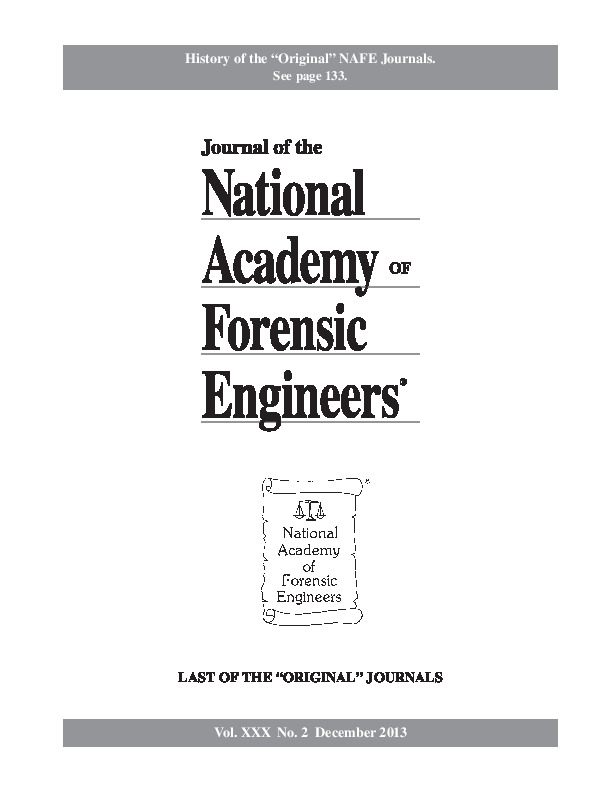Forensic Engineering Analysis Of Acceleration Of Cars Vans Light Trucks And Suv’s
DOI:
https://doi.org/10.51501/jotnafe.v30i2.791Keywords:
Intersection accidents, acceleration, cars, SUVs, vans, light trucks, time-to-impact, speed-at-impact, and distance traveled.Abstract
Often, Particularly In The Reconstruction And Analysis Of Traffic Accidents At Or Within Intersections, The Time For One Or More Of The Vehicles To Reach The Point Of Impact And Their Speed At Impact Are Im-Portant Factors. In Cases Where Vehicles Enter The Intersection From A Stopped Condition, Such Times And Speeds Are Typically Obtained By Assigning To The Vehicle Of Interest An Average Acceleration And Comput-Ing The Time To Travel To Impact And Speed At Impact By Using Elementary Physics. However, Justification Of An Assumed Acceleration Can Become A Critical Issue At Time Of Trial Since Rarely Is The Reconstructionist Able To Support The Reasonableness Of His Estimate For Acceleration And/Or Its Applicability To The Involved Accident. This Paper Provides Means For Estimating Time-To-Impact And Speed-At-Impact For Passenger Cars, Vans, Light Trucks, And Suvs Starting From A Stopped Condition To Impact, Both For Vehicles Traveling Straight And Turning. The Equations And Procedures Developed Are Based On Empirical Acceleration Data From Multiple Sources Which Show That The Acceleration Of Such Vehicles, When Starting From A Stopped Condition, First Increases To A Peak Value Then Falls Off As A Function Of Velocity.Published
2013-01-01
How to Cite
Grossman, Richard D. 2013. “Forensic Engineering Analysis Of Acceleration Of Cars Vans Light Trucks And Suv’s”. Journal of the National Academy of Forensic Engineers 30 (2). https://doi.org/10.51501/jotnafe.v30i2.791.
Issue
Section
Articles
License
Copyright (c) 2013 National Academy of Forensic Engineers

This work is licensed under a Creative Commons Attribution-NoDerivatives 4.0 International License.
All rights © Journal of the National Academy of Forensic Engineers.
Full statement regarding the author's license of copyright to the NAFE is shown on the Copyright section of the Submissions Page.






